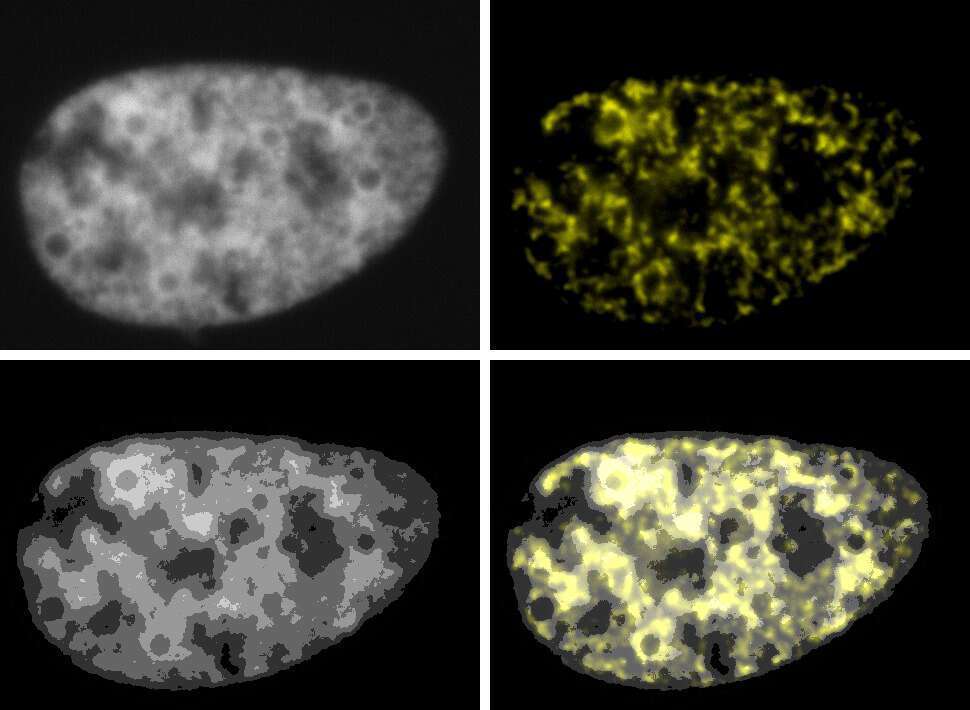
PROBING NUCLEAR ORGANIZATION IN LIVING CELLS WITH GENETICALLY ENCODED SUPRAMOLECULAR PROTEIN ASSEMBLIES
2Division of Applied physics, Hokkaido university, Sapporo, Japan
3Faculty of exact sciences, Tel Aviv University, Tel Aviv, Israel
Unraveling chromosome organization and dynamics is fundamental for understanding the functional architecture of the cell nucleus. On one hand the nuclear volume is quite small and packed with DNA, and on the other hand it has to be sufficiently sparse to allow fast diffusion of RNA and proteins in the nucleoplasm. New experimental approaches are emerging to monitor nuclear structure and chromosome dynamics in living cells. We take advantage of genetically encoded supramolecular protein assemblies (SMPA) as intra-nuclear tracers. Based on ferritin fused to a fluorescent protein with inducible dimerization (1), intricate percolating structures reveal the domains of low density within the chromatin. Isolated SMPA show a characteristic pattern of diffusion that suggests entrapment within an unusual gel: strongly sub-diffusive scaling at short times but normal scaling at times exceeding about 10 sec. This can be interpreted as a time scale for loss of correlation in movements of the chromatin medium itself.

1. Bellapadrona G, Elbaum M (2016) Design of a Redox-Sensitive Supramolecular Protein Assembly System Operating in Live Cells. Nano Lett 16(10):6231–6235.
Powered by Eventact EMS